#teletypewriting
Text
Sai pallavi sex scandal
Redhead fucked anally in a bar
The two Jayden Coles get wet and horny on a motorcycle
Hot hunk gets a unfathomable ass drilling from gay masseur
Ngentot Bispak Kampus Sampe Puas
Boquete na rua
Dark man cums on faces of white girls after threesome sex
Mamacitas en faldita mostrando tangita en la calle
Muslim girl giving head
genevese rylee swallow bbc
#elasticin#undercarried#arrased#pluckiness#presurvey#chemistry#nonorthogonality#villagism#sjambok#old先#teletypewriting#fating#genarchship#disequality#Yachats#partitionist#gravicembalo#unintricateness#punnical#therewith
0 notes
Text
#linuxtldr#linux#history#shell#tty#pty#teletypewriter#typewriter#computing#kernel#technology#terminal#console#display
0 notes
Text
hey guys i made a shikigami

tethys
it/its
150cm 40kg (human form)
a shikigami which was made by taping a calculator to a recently taxidermied coyote and doing some particularly haphazard magic to it. it communicates via a connection to a teletypewriter, with the serial cable just sort of shoved awkwardly into its stuffing. it was later given a human form so it can actually be animate, but even in this form it can still only communicate by sending signals to the teletype. it is completely mute, and mostly deaf (able to identify the volume of sounds but not distinguish their type). it is quite meek and easily confused. it gets lost easily and rarely strays far from home. it likes to be helpful, in whatever ways it can. it likes being showered in praise, but can easily become overstimulated by it. when overwhelmed, it sometimes becomes paralyzed and falls over.
#every single time i make an oc as a joke i end up accidentally falling in love with it and becoming super attached#it is my beautiful daughter and i want to pick it up and cherish it#if it got hurt i would die#touhou oc#<- not actually but essentially
88 notes
·
View notes
Text
The World of Spy x Family: Spy Radios
We don’t see a ton of Twilight/WISE’s spy gear in the show, and even less of the SSS’s counterintelligence gear, but what we do see blows me away. The attention to detail in this anime and manga is impressive. I’ve been able to research and clearly identify everything except the WISE HQ set of screens/radios (mostly bc we only get a zoomed out perspective of that), and it all matches up to what would have been used during the Cold War and in West and East Germany.
Let’s start with Twilight’s own radio kit. In the manga it looks like this:

And in the anime it’s practically identical, with only a few knobs and things moved around:

Now, it’s not exactly identical to it’s real-world counterpart, but it’s astoundingly close. The Spy x Family version just looks a little sleeker.

This is an ESK-52/Type 41 Amateur Radio Set, produced by the West German company Telefunken for the West German Intelligence Service, or the Bundesnachrictdienst. It was first produced in 1952,and was primarily used during the Cold War.
The Type 41 is a type of stay-behind radio set, used by spies who stayed behind in other countries to gather intelligence. For secrecy reasons, spy radios were often marketed as “amateur radio sets” to make them seem less suspicious. The Type 41 comes inside a suitcase, and is fully capable of both receiving and transmitting morse code messages over radio frequencies. It came equipped with headphones that look very similar to the ones portrayed in Spy x Family:

And now for the SSS. In Episode/Chapter 1, when Anya accidentally sends the message with her location and a challenge. In the manga, we can barely see it because of all the speech bubbles, but here’s what we can see:

The anime gives us a much clearer shot:

This one looks pretty close to its real-world counterpart, the R-353. You can see that the anime/manga simplified things a little bit, but overall they look very similar:

The R-353 was a Soviet-manufactured spy radio set, also used by other Warsaw Pact countries, such as East Germany. In East Germany, it was used by the government, and by the Stasi in particular.
The R-353 was one of the most sophisticated Cold War Soviet spy radios, with the capability to receive and send morse code signals over radio frequencies, which could be sent manually, semi-automatically with the numerical dial, or completely automatically by magnetic tape.
Now, on to the tricky part: WISE HQ. Here’s what it looks like in the manga:
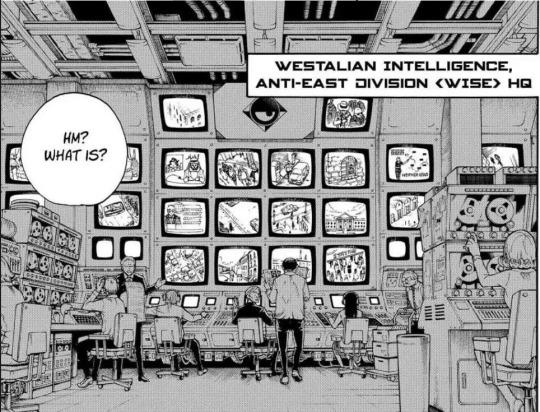
and in the anime:

As of yet, I’ve been unable to concretely identify anything in these pictures, although I strongly suspect the the cabinets with rotors are Bombe Machines, which look like this:
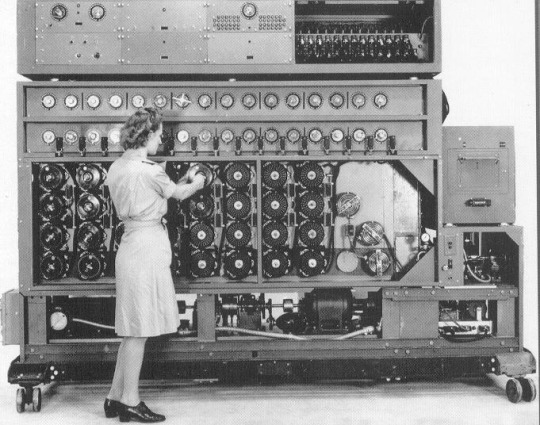
Bombe machines were used to brute-force the Enigma machine during WW2, and i’m not sure how WISE would have got a hold of any, since every single Bombe machine the British had was destroyed after the war to maintain secrecy. Perhaps WISE got a hold of a Polish Bombe machine and are trying to break Ostania’s ciphers?
Trying to play I Spy with the radios and other equipment in these panels/screencaps of WISE HQ has been tricky. The shots are all zoomed out, making it nearly impossible to see any identifiers. My best guess is a combination of radio transceivers (transmitter/receiver combination) and Telex machines (teletypewriters - think telegraph but combined with a typewriter and outputting ASCII characters rather than Morse code).
Without more detailed and close-up shots of the equipment in WISE HQ, I can’t make any guesses as to the specifics of the machines.
In conclusion, I continue to be blown away by the attention to detail in this series, in both the anime and manga. Even things we see maybe once or twice are very well thought-out, and there are so many layers to dig through, from the geography all the way to the spy gadgets that have maybe ten seconds of screentime or one manga panel.
Edit: all info on the historical spy gear i talked about can be found at cryptomuseum.com. I highly recommend checking it out if you’re interested, they have done a very thorough job of documenting things.
#spy x family#spy x family meta#meta analysis#lea over-analyzes fictional stuff again#in all seriousness there's so much to dig into here#i'm not great at the politics/plot analysis#but hot damn can i analyze the language geography and spy stuff#just you wait until i post about the cryptography
86 notes
·
View notes
Note
I have a situation I'm hoping you or your followers can provide guidance on. I have speech disabilities that impair my ability to talk on the phone and need to contact my bank. I needed to reach out to them on facebook because they do not have a teletypewriter line listed on their contact page. The response I got was that I needed to call or use a 3rd party service like Skype (the example given). I'm wondering if this is even legal?
Thanks
~~~~
12 notes
·
View notes
Text
Arts and Crafts: You are Insane Edition
Or, what to do when you are just two obscure items short of a full collection, and those items do not exist, so you have to make them yourself
The last two items on the packing list in the 1970 Recondo manual are "SOI and KAC codebooks" SOI meaning Signal Operating Instructions, and KAC being apparently meaningless as I can't for the life of me figure out what it means in this context (is it a typo that just keeps getting repeated? Is it supposed to be KEK - key encryption key??).
These notebooks were mission specific, i.e., made for each mission and then destroyed afterwards, so the only ones that survive come from the effects of veterans who happened to hang onto them. Which is to say, you are not going to find one. The pool of guys who served in this capacity is in the hundreds.
Anyway, knowing they were disposable and going off the modern forces website, I knew they used prong fasteners to hold them together and I figured relative to the pencil and the memoranda notebook there they were somewhere in the 4"x5" range, but 4" x 5" isn't a standard size, and I couldn't imagine they cut paper in a special size for these disposable items. The closest I could guess was a regular 8.5" x 11" sheet folded in quarters.

a little photoshop nonsense gives a better sense of a size of the notebook relative to a snaplink and a little comparison indicates I was pretty close


Of course the next problem is to figure out what goes inside. You can google SOI and KAC codebook and you'll get the modern forces website and next to nothing else. No clue how to fill these things. A little googling about Signal Operating Instructions gives a few US military Field Manuals -- according to FM 11-32, FM 24-35 is Signal Operating Instructions but I couldn't find a PDF of it. Appendix C of FM 11-1 gives a three-sheet "Sample SOI" and long story short eventually I landed on FM 24-19, which is titled "Radio Operator's Handbook," Chapter 5 of which covers "Operating Prodecures." Section I is "Radiotelephone Procedures," which I printed out and combined with the FM 11-1 "Sample SOI" to make my SOI notebook. Section II is "Radio Teletypewriter Procedures," Section III is "Radiotelegraph Procedures," Section IV is "NRI Calls," and Section V is "Operator Number Sheet and Circuit Log." These I printed to make my KAC codebook. Does any of this have any bearing on what actually goes into either of these? If anyone can tell me what's supposed to go in, please tell me and I'll redo them.
Arts and crafts time:
Four sheets to a page, pages quartered, and I cut up manila file folders for the covers. Is that what they used? Impossible for me to ascertain. Two hole punched and on we go.

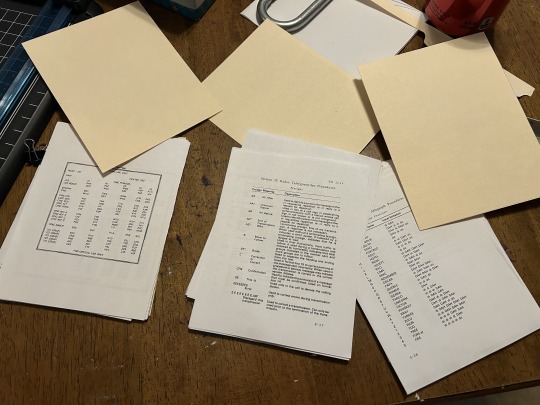

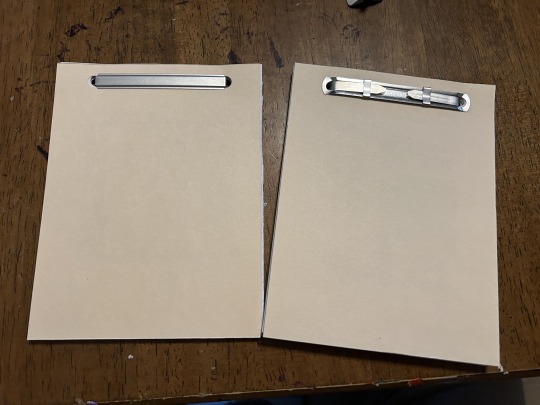


5 notes
·
View notes
Text
Ok I Know TTY Means 'Teletypewriters', But Every Time I See It My Brain Just Says 'Text To Yeech'
0 notes
Text
BT project archive visits 17.11


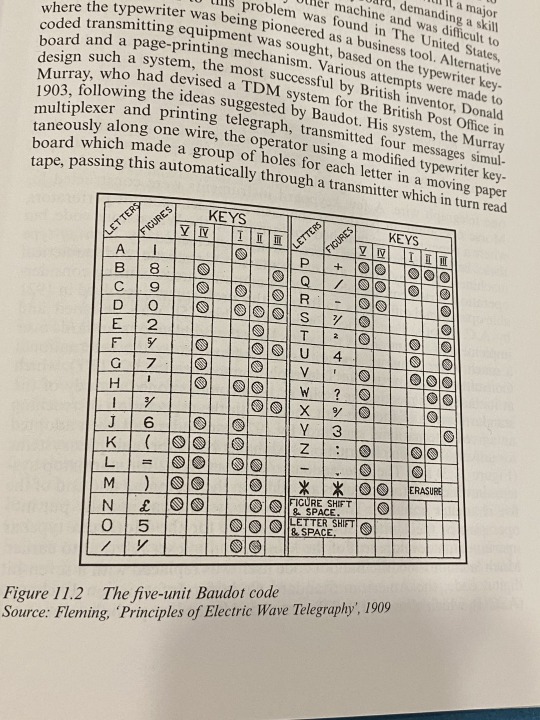



These are interesting materials I saw at the BT archive today.
During World War I, attempts were to hire women as night-time employees due to a lack of manpower, but at that time, women were paid less than male employees, and many women were dissatisfied with it.
I can see that women have always played a significant role in telecommunication. as well as women who use switchboards I saw women using teleprinters.
teleprinter: A teleprinter ( teletypewriter, teletype or TTY ) is an electromechanical device that can be used to send and receive typed messages through various communications channels, in both point-to-point and point-to-multipoint configurations. Teleprinters were invented in order to send and receive messages without the need for operators trained in the use of Morse code. A system of two teleprinters, with one operator trained to use a typewriter, replaced two trained Morse code operators. The teleprinter system improved message speed and delivery time, making it possible for messages to be flashed across the country with little manual intervention. Some models could also be used to create punched tape for data storage (either from typed input or from data received from a remote source) and to read back such tape for local printing or transmission.
In addition to the Morse code, I also learned that several codes were used in telegrams. Such as the Needle telegraph, and the Baudot code.
I could also see the design identity of British Telecom (1970-1980) before they became the current BT. They emphasized the T of Telecom as a logo and designed the T logo using 3 lines which bring up the image of various cables, and telephony wires and these three lines are designed slanted so it can show the idea of speed. At that time, their colour scheme was yellow red blue, and at that time, they used a bird called Buzzby as their mascot.
Buzby was a yellow (later orange) talking cartoon bird, launched in 1976 as part of a marketing campaign by Post Office Telecommunications, which later became British Telecommunications (BT).
0 notes
Text
Easy ascii art

Despite this, ASCII art continued to survive through online MUDs, an acronym for "Multi-User Dungeon", (which are textual multiplayer role-playing video games), Internet Relay Chat, Email, message boards and other forms of online communication which commonly employ the needed fixed-width. ĭuring the 1990s, graphical browsing and variable-width fonts became increasingly popular, leading to a decline in ASCII art. In place of images in a regular comic, ASCII art is used, with the text or dialog usually placed underneath. An ASCII comic is a form of webcomic which uses ASCII text to create images. Along with ASCII's use in communication, however, it also began to appear in the underground online art groups of the period. The limitations of computers of that time period necessitated the use of text characters to represent images. The widespread usage of ASCII art can be traced to the computer bulletin board systems of the late 1970s and early 1980s. There are 95 printable ASCII characters, numbered 32 to 126. Note that it was not ASCII art in a sense that the 1403 was driven by an EBCDIC-coded platform and the character sets and trains available on the 1403 were derived from EBCDIC rather than ASCII, despite some glyphs commonalities. At the same time, Kenneth Knowlton was producing realistic images, also on line printers, by overprinting several characters on top of one another. In the 1960s, Andries van Dam published a representation of an electronic circuit produced on an IBM 1403 line printer. What is known is that text images appeared frequently on radioteletype in the 1960s and the 1970s. However, none of the "old" RTTY art has been discovered yet. According to a chapter in the "RTTY Handbook", text images have been sent via teletypewriter as early as 1923. RTTY stands for Radioteletype character sets such as Baudot code, which predated ASCII, were used. TTY stands for "TeleTYpe" or "TeleTYpewriter", and is also known as Teleprinter or Teletype. Since 1867, typewriters have been used for creating visual art. ASCII art was also used in early e-mail when images could not be embedded.Ī portion of the Brooklyn Daily Eagle, 6 January 1875, showing advertisements made from typewriter art. Also, to mark divisions between different print jobs from different users, bulk printers often used ASCII art to print large banner pages, making the division easier to spot so that the results could be more easily separated by a computer operator or clerk. ĪSCII art was invented, in large part, because early printers often lacked graphics ability and thus, characters were used in place of graphic marks. "Studies in Perception I" by Ken Knowlton and Leon Harmon from 1966 shows some examples of their early ASCII art. Most examples of ASCII art require a fixed-width font (non-proportional fonts, as on a traditional typewriter) such as Courier for presentation.Īmong the oldest known examples of ASCII art are theĬreations by computer-art pioneer Kenneth Knowlton from around 1966, who was working for Bell Labs at the time. ASCII art can be created with any text editor, and is often used with free-form languages. The term is also loosely used to refer to text based visual art in general. Dag Hammarskjöld, printout from teleprinter 1961-62ĪSCII art is a graphic design technique that uses computers for presentation and consists of pictures pieced together from the 95 printable (from a total of 128) characters defined by the ASCII Standard from 1963 and ASCII compliant character sets with proprietary extended characters (beyond the 128 characters of standard 7-bit ASCII).

0 notes
Text
Windows console application to mac terminal app

#Windows console application to mac terminal app how to
#Windows console application to mac terminal app software
#Windows console application to mac terminal app windows
It doesn't actually process your input, it doesn't look at your files or think. It's really good at displaying textual output.
#Windows console application to mac terminal app software
When we refer to a Terminal in the software sense, we're referring to a literal software version of a TTY or Terminal. When that computer replies, you'll see the typewriter automatically type on the same paper. When you type on it, you're seeing the text on a piece of paper AND inputing that text into a computer. Rather than a screen you'd have a literal typewriter in front of you. TTY or "teletypewriter" was the first kind of terminal. You'll often hear "dumb terminal" when referring to a text-based environment where the computer you are sitting next to is just taking input and showing text while the real work happens at the other end in a mainframe or large computer. The word Terminal comes from terminate, indicating that it's the terminating end or "terminal" end of a communications process. Let's start with a glossary and clarify some words first.
#Windows console application to mac terminal app windows
Can I use conemu with PowerShell Core or do I need to use Windows Terminal?.
I don't need WSL for bash, I use Cygwin.
Why would I use Windows Terminal over PowerShell?.
In the next tutorial, you create a class library.I see a lot of questions that are close but the questions themselves show an underlying misunderstanding of some important terms. In this tutorial, you published a console app. For example: cd ~/Projects/HelloWorld/HelloWorld/bin/Release/net5.0/publish/Įnter dotnet HelloWorld.dll and press enter.Įnter a name in response to the prompt, and press any key to exit. To do that, enter cd and then paste the path that you copied earlier. Open a terminal and navigate to the publish folder. You can also add configuration options to it. NET that your application was built to run on. This is the application's runtime configuration file. You aren't required to deploy this file along with your application, although you should save it in the event that you need to debug the published version of your application. This method of running the app works on any platform that has the. To execute this dynamic link library, enter dotnet HelloWorld.dll at a command prompt. This is the framework-dependent deployment version of the application. For more information, see Runtime configuration files. NET components and the libraries (including the dynamic link library that contains your application) needed to run the app. This is the application's runtime dependencies file. Users can run the published app by running the dotnet HelloWorld.dll command from a command prompt.Īs the preceding image shows, the published output includes the following files: The publishing process creates a framework-dependent deployment, which is a type of deployment where the published application runs on a machine that has the. Select the gear icon, and select Copy "publish" as Pathname from the context menu. The publish folder opens, showing the files that were created. In the Publish to Folder dialog, select Publish. If necessary, change the build configuration setting on the toolbar from Debug to Release.įrom the main menu, choose Build > Publish to Folder. Make sure that Visual Studio is building the Release version of your application. NET console application using Visual Studio for Mac. Open the HelloWorld project that you created in Create a.
This tutorial works with the console app that you create in Create a.
To deploy the files, copy them to the target machine. Publishing creates the set of files that are needed to run your application.
#Windows console application to mac terminal app how to
This tutorial shows how to publish a console app so that other users can run it.

0 notes
Text
The California Lifeline
The California LifeLine Program (California LifeLine) is a state program that provides discounted home phone and cell phone services to eligible households. The California LifeLine discounts help consumers lower the cost of their phone bills. Only one discount per household is allowed (except for teletypewriter users and for Deaf and Disabled Telecommunications Program participants). Each household must choose to get the discount either on a home phone or on a cell phone, but not on both. Check out the Types of Discounted Services Available to learn about the program's benefits.
Hours: Mon-Fri 7am-7pm
Main General Phone: 1 (866) 272-0357
English Phone: 1 (866) 272-0349
Spanish Phone: 1 (866) 272-0350
TTY Phone: (866) 272-0358
Website: https://www.californialifeline.com/en
1 note
·
View note
Text
Smartphones and their impact on written language and literacy in the deaf community
As digital technology became more prevalent in society a linguistic phenomenon known as digitalese caused concern. Anxious parents and teachers worried that text speech used on social media and instant messaging would damage the language skills of the younger population (Tagg, 2015). While the digitalese discussion was occurring in the media, another group of people were inviting the new technology with open arms.
The deaf and hard of hearing community have been hoping for technology to provide them with better communication tools for generations, but generally new inventions have fallen short of the mark. The invention of the telephone stemmed from a project intended to assist the hard of hearing and later a teletypewriter was invented but it was only able to connect to other teletypewriters (Maiorana-Basas and Pagliaro, 2004).

An Avaya 1140 TTY UniPhone (modern teletypewriter) (Source: Amazon.co.uk)
Mobile phones and their two-way text messaging technology and more recently sign language detection and speech-to-text apps have finally provided invaluable communication aids to the deaf and hearing impaired. Studies conducted into technology use have found that teletypewriters and telecommunications devices have become less frequently used while the use of smartphones and personal computers has risen (Maiorana-Basas and Pagliaro, 2004).
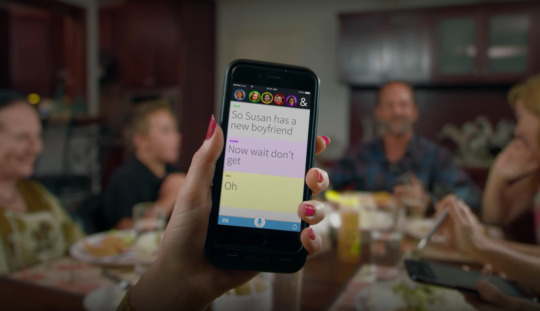
Speech-to-text technology (Source: Techcrunch.com)
This new technology has proven especially useful for school age children as a platform to improve their literacy skills. Many deaf children have been taught to communicate via sign language which functions differently from spoken and written languages in aspects like grammar and word order. This results in hearing impaired learners effectively trying to learn a whole new language as they learn how to write. This puts deaf and hard of hearing children at a disadvantage, a fact that has been reported by many studies over the years (Antia et al, 2020). On average hearing-impaired children develop literacy skills slower than their hearing counterparts and it is a trend that tends to continue through their academic career.

Learning phonetics (Source: National Deaf Children’s Society)
A study conducted by Akamatsu et al (2006) on deaf teenagers found that access to two-way text messaging technology afforded them with greater freedom and independence. On top of that, students reported that using their text messaging devices motivated them to improve their reading and writing skills.
Based on studies conducted in the field, the implications of smartphone technology on the education of the deaf community could be quite important. It has shown potential to enhance language learning through access to language models and transactions between readers and text (Maiorana-Basas and Pagliaro, 2004). More research is required into smartphones supporting the language and literacy learning of the deaf community but as the Akamatsu et al (2006) study showed the impact on the participants lives has been very positive overall.
References
Antia, S., Lederberg, A., Easterbrooks, S., Schick, B., Branum-Martin, L., Connor, C., Webb, M., 2020. Language and Reading Progress of Young Deaf and Hard-of-Hearing Children. The Journal of Deaf Studies and Deaf Education, Vol 25 (3), pp. 334–350
Akamatsu, C., Mayer, C., Farrelly, S., 2006. An Investigation of Two-Way Text Messaging Use With Deaf Students at the Secondary Level. The Journal of Deaf Studies and Deaf Education, Vol 11 (1), pp. 120–131.
Maiorana-Basas, M., Pagliaro, C., 2014. Technology Use Among Adults Who Are Deaf and Hard of Hearing: A National Survey. The Journal of Deaf Studies and Deaf Education, Vol 19 (3), pp. 400–410.
Tagg, C., 2015. Exploring Digital Communication: Language in Action. Taylor & Francis Group.
Wolbers, K., 2008. Using Balanced and Interactive Writing Instruction to Improve the Higher Order and Lower Order Writing Skills of Deaf Students. The Journal of Deaf Studies and Deaf Education, Vol 13 (2), pp. 257–277
5 notes
·
View notes
Text
Obejrzyj film „Vintage Radio Vacuum Tube Electronics: 1963 Mobile Teletypewriter Military Communications AN/GRC-46” w YouTube
youtube
10 notes
·
View notes
Text
All the President’s Men (1976)
First things first, it’s amazing that this movie came out only 4 years after the date of the break-in to the DNC headquarters.
IMDB has lots of fun trivia on this one:
The furious volley of typewriter hammers striking paper in the opening scenes was created by layering the sounds of gunshots and whiplashes over the actual sounds of a typewriter, accentuating the film's theme of words as weapons. This is also why the closing scene has a teletypewriter printing headlines with the sound of cannon fire from a 21-gun salute in the background.
I have to admit, I found the sound alarming after a few moments of pure silence before it.

Anyway, going in a bit blind, but with a basic knowledge of the Watergate scandal, so this will be interesting to see.
Also some neat trivia: Frank Wills was the security guard who discovered the break-in at the Watergate complex, and he plays himself in this film.
Also, one of the writers is William Goldman, and he wrote The Princess Bride.
Oh, hey! The director, Alan J. Pakula, also directed To Kill a Mockingbird.
“Follow the money.” Three words, but a brilliant line. I wonder if Lin-Manuel Miranda picked up on that phrase here first. I read in the trivia that this film coined the phrase. I don’t know. Just an interesting thought. I love drawing connections like this.



My god, this movie was definitely not made for me. I have no attention span for it. I’ve watched it all so far, but I’ve had to pause it several times because despite what practiced critics say about the thing, I, the average viewer, am finding it boring as. And it’s not that I don’t understand what’s happening. It’s not that I’m not interested in the Watergate scandal or not familiar. It’s that this film is not... exciting at all to me.
I do like the excitement of following the money and the leads and investigative journalism, but I’ve got to say... that only lasts so long. It doesn’t stay interesting for 2 hours and 18 minutes. I just can’t be bothered with it.



I have to be honest, I haven’t barely given this any scoring because I can’t find anything I love or hate about it. It just exists.


ESE: 70/100
50
+5 for Bernstein catching the librarian’s bullshit
+5 for “I’ve got a wife and a family, a dog and a cat.”
+5 for the clever confirmation countdown
+5 for “words are weapons” theme
#All the President's Men#Dustin Hoffman#Robert Redford#Jack Warden#Martin Balsam#Hal Holbrook#F. Murray Abraham#Jane Alexander#Ned Beatty#John Randolph#Jason Robards#Dominic Chianese#Basil Hoffman#biography#drama#history#thriller#suspense#movies#films#70s films#70s movies#review#world record
12 notes
·
View notes
Photo


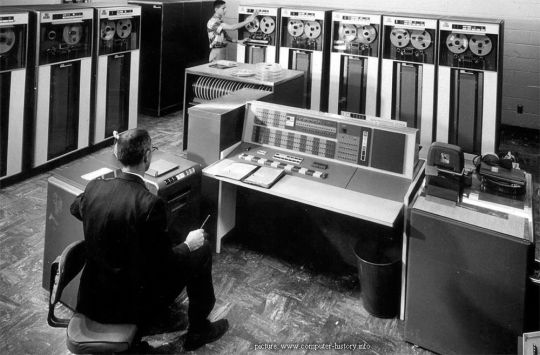
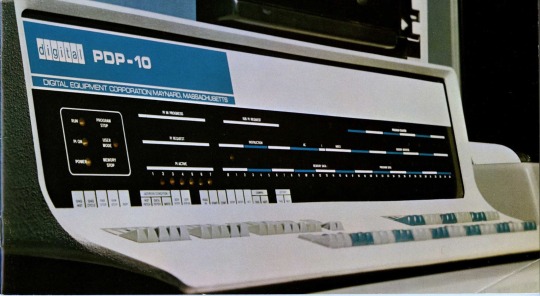
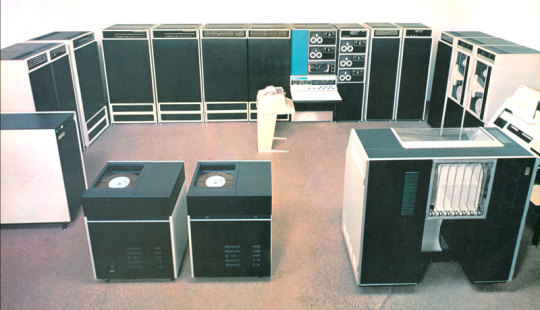
I used to play Team Fortress 2 a lot these past 2 years.
This game is one of my favorite videogame of all times and I’m totally fond of this fake 60′s technology aesthetic.
In many maps of this game, there’s inaccessible rooms full of teletypewriters, early computers and reel-to-reel recorders.
At first, I believed all of these computers where inspired by the PDP-10 (photo #4 & #5) but a friend told me it’s probably more inspired by the IBM 729 (photo #2 & #3). And when you compared pictures from the game to pictures of the IBM computer, they almost look the same ! Good job Valve !
__________________________________________
Depuis 2 ans, je joue très régulièrement à Team Fortress 2.
C’est un de mes jeu-vidéo préféré de tous les temps et je suis complètement fan de son esthétique faussement sixties.
Dans de nombreuses carte du jeu, il y a des pièces inaccessibles pleines de téléscripteurs, d’ordinateurs ou d’enregistreurs magnétiques.
Au début, je pensais que ces ordis étaient inspirés du PDP-10 (photo 4 et 5) mais un ami m’a dit que c’était bien plus probablement inspiré de l’IBM 729 (photos 2 et 3). Et quand on compare les images du jeu et celles de l’ordinateur IBM, on se rends compte qu’ils sont quasiment identiques ! Bon boulot Valve !
#forge#misc#forge the maker#maker#hacker#PDP-10#vintage#IBM-729#Team Fortress 2#Valve#Pyro#Pybro#Pyro main#electronic#computer#computers
34 notes
·
View notes
Text
Shelters across the United States have been inundated with new domestic violence cases, but many of them aren’t equipped with the resources to meet the needs of deaf, deafblind, or other survivors with disabilities. While deaf and hard of hearing people experience the same forms of violence that hearing people do, they are 1.5 times more likely than hearing people to experience domestic violence in their lifetime. Estimates also show that deaf and disabled women are frequently victims of sexual violence: 83 percent of women with disabilities are sexually assaulted at some point in their lives. Sexual violence is typically perpetrated by a person the victim knows—eight out of 10 rapes are committed by a known person, and 33 percent of rapes are committed by a spouse or partner.
Martinez is among the approximately 48 million deaf or hard of hearing people in the United States at risk of domestic violence during the lockdown, yet several systemic barriers are preventing survivors like her from accessing necessary resources during the pandemic. Because abusers are now always at home and able to monitor conversations, it’s become more challenging for survivors to reach out to domestic violence agencies and hotlines for support. But even if survivors could safely reach out, many of these agencies and hotlines can’t support them, since these organizations often lack qualified sign language interpreters and other accessible means of communication. (ASL, which is derived from early 19th-century French Sign Language, is grammatically different from English, so for those whose primary language is ASL, using English to communicate isn’t an option.)
What’s worse, some domestic violence organizations make communication demands that ignore the realities of many deaf people’s lives, said Najma Johnson, the executive director of DAWN, a domestic violence agency based in Washington, D.C. that serves deaf and hard of hearing survivors, including those with other disabilities. Some require deaf survivors to reach out to them using teletypewriters (TTY), an antiquated telephone device invented in the 1960s, though many prefer to use IP Relay, a service that allows users to make and receive calls through text over the internet, or Video Relay Services (VRS), which allow for communication through a remote sign language interpreter over smartphones and computers. “DAWN usually has to step in and explain why [VRS are] the better choice…and break down confidentiality laws to ease discomfort about using third-party communication,” Johnson said.
80 notes
·
View notes